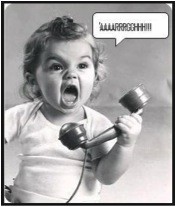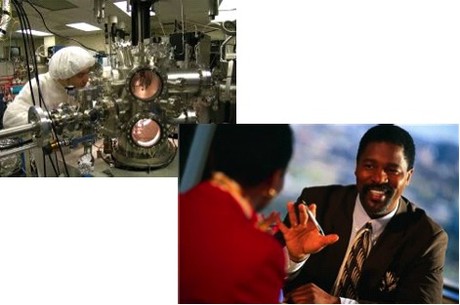Interviewing End-Customers
Tips and Sample Questionnaires
Interviewing customers is the best way to understand what they do, what they need, and what they care about. But effective interviewing is an art and a skill to be nurtured. When you craft the questionnaire that you use when talking to your customers, you need to consider the customer segment you are targeting as well as the different roles—and, therefore, needs and priorities—that your interviewees hold. Here are tips and samples to help you get the most out of customer interviews.
NETTING IT OUT
The best way to find out what customers care about is to ask them. And a well-planned customer interview can surface their priorities, frustrations, and hot buttons, giving you great information and ammunition for planning new products, services, processes, and business models.
But effective interviewing requires crafting questionnaires that will elicit the types of information you are looking for as well as adjusting these questionnaires for the different segments or roles that make up your customer base.
Further, conducting interviews is a skill (or perhaps an art) that needs to be cultivated. Here we offer sample questionnaires and tips on how to conduct interviews that will make your customers comfortable and will yield the best results for whatever customer initiatives you are undertaking.

Get the Voice of the Customer, be it positive or negative!
BUILD VOC INTO EVERY MAJOR PROJECT YOU DO
Solicit Customer Input from the Get Go
Over the years, in the course of our consulting engagements, we have developed strong techniques for interviewing customers that will add value to any initiative. Whether your goal is to collect Voice of the Customer (VOC) input, to design innovative new offerings, to improve your customer experience, to streamline your operations, and/or to grow your business, you’ll gain invaluable insights by including the Voice of your Customers in the process.
So don’t let VOC be a box you have to check off for certain projects. Embrace it! Don’t solicit customers’ input to validate your projects after you’ve figured out what to do. Solicit VOC input at the outset of every initiative. In fact, at least half of your initiatives each year should emerge from your customers’ needs and priorities. Let customers shape 50 percent of your strategic directions. Get them involved in kicking off the projects that you’re doing in response to their needs. Ideally, you can also keep your most insightful customers engaged in co-designing with and advising your product development team, your business process redesign team, your customer experience design team, and/or your marketing launch teams along the way. You’ll shave months off of your projects and save yourselves incredible amounts of rework by getting insightful customers engaged up front!
Remember, people like to talk about what’s hard for them to do and why and how it could be easier. They like telling their stories and providing insightful suggestions especially if they really feel they are being heard!
Face-to-Face Observations and Interviews
1. Observing someone actually doing their job provides the most insights into what they need and how your company can help them be successful on the job. And face-to-face meetings are extremely good for bonding and picking up subtle hints to what the interviewee is thinking based on their body language and expressions. But both are a big investment of time and attention for your customers and for your organization.
What about “High Say, Low Do” Behavior?
We’ve heard many executives—particularly marketing execs—disparage customer interviews. They believe that customers say one thing, but do another. Customers may say they are willing to pay more for higher quality products, but then actually buy only low quality products at commodity prices, for example. That’s why we never ask customers about what they think or believe. We ask them what they do today, how they do it, why they do it, how they feel about how they do things, and in what ways it could be easier for them to achieve the same results. They’re not really talking about your stuff. They’re talking about how they ideally want to get things done. And why. That’s useful.
SOLICITING CUSTOMER INPUT THROUGH INTERVIEWS
The Importance of One-on-One, In-Depth Interviews
We begin every customer engagement with interviews. So, why interviews? Unlike surveys, individual interviews allow you to get to the underlying reasons an answer is given. Asking to rate something on a scale of 1 to 10 doesn’t bring the insights or the learning that comes from asking customers specifically what they were trying to accomplish, what worked for them, what didn’t work, and why.
FACE-TO-FACE? Of course, visiting customers and observing them is better than talking with them over the phone. But it’s a big investment of time and attention for both parties. So we usually recommend on-site interviews and observation for high-value projects in which it makes sense to invest in field visits. We typically kick off projects with…(more)
(Download the PDF to read the entire article.)
Sign in to download the full article
0 comments
Be the first one to comment.




